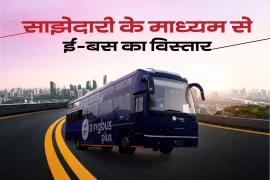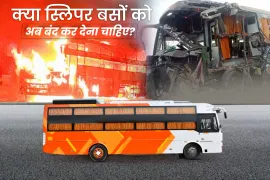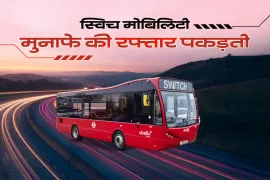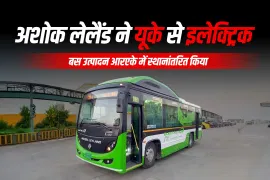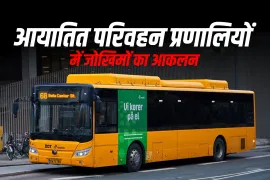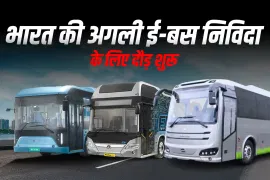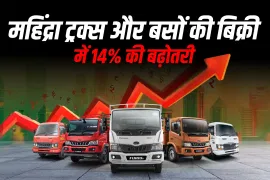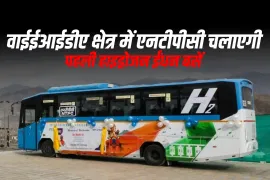India is changing its transport systems and electric vehicles are coming onto urban and rural roads. Among them, the Olectra C9 electric bus is unique. It plans for long-distance travel, its mission is straightforward: drive out diesel by using clean energy for intercity travel.
As more states invest in electric mobility, buses such as the Olectra C9 come under the spotlight. Operators desire reduced running expenses, passengers desire improved comfort, and governments desire commercial vehicles that produce less emissions. The C9 provides all three, but can it take the lead?
Why Intercity Electric Buses Matter
In urban areas, electric buses have developed rapidly, and friendly policies spurred them along, but intercity travel is different, though. Longer routes, fewer charging points, and irregular terrain create problems.
Operators do not want to spend money on electric buses for highways. They are afraid of battery constraints. They fear the lost time due to long stops to recharge. The Olectra C9, though, is set to turn this around. It offers great range, powerful torque, and rapid charging.
Olectra C9 – Built for the Road Ahead
Olectra C9 intercity bus is from Olectra Greentech in collaboration with BYD. It's India's first long-distance electric coach. Its aerodynamics enable endurance, comfort, and safety, essential factors in intercity travel.
Main Specifications:
- Length: 12 meters
- Seats: 39+D
- Battery: LFP (Lithium Iron Phosphate)
- Range: Up to 300 km on a full charge
- Top speed: 70 km/h
- Power: 180 kW
- Torque: Approximately 8,00 Nm
- Charging time: 3-4 hours (fast charging)
Every component has a purpose. The range is for highway lengths. The motors assist with gradients and over-taking. Rapid charging reduces downtime.
Built Around Passenger Comfort

Long-distance travel takes its toll on passengers. Fatigue comes on quickly. To minimize this, the Olectra C9 electric bus incorporates comfort elements throughout the cabin.
- Seats recline and provide headrests
- USB ports are located alongside every seat
- A strong air-conditioning unit maintains stable temperature
- A quiet cabin makes travelling serene
- Space for storage makes luggage simple to access
- Passengers feel less anxious. That's confidence in electric mobility.
Safety-focused
Olectra outfits the C9 bus with robust safety features. They conform to Indian transport standards and extend beyond.
- ABS provides smooth braking
- Fire sensors identify and quell risk ahead of time
- Cameras monitor movement in and around the vehicle
- GPS tracks the bus in real-time
- The system adheres to ITS protocols for intelligent mobility
The objective: keep drivers, passengers, and vehicles safe at all times.
Efficiency Meets Sustainability
The Olectra C9 provides both environmental and cost benefits.
Clean Operation
Its electric powertrain spews out no tailpipe pollutants. Cities and roads remain cleaner. Years from now, each bus prevents tons of CO₂ emissions. It contributes to India's climate objectives.
Cost Advantage
Diesel is expensive compared to electricity. Electric motors also consist of fewer moving parts. That translates into less maintenance. Although the price of the Olectra C9 bus is more initially, the operators gain it back fast with:
- Lower fuel expenses
- Lower service requirements
- Lower policy benefits, such as subsidies and tax breaks
TCO over time is lower than diesel.
Government Support and Market Effect
India favors EVs. Governments are purchasing and leasing electric buses through FAME-II and state EV policies. Cities such as Hyderabad and Mumbai employ Olectra's city buses. Intercity deployment is increasing now.
Charging points are becoming common on highways. Pilot lanes are being built. If charging access increases, the Olectra C9 electric bus is that much more feasible.
Practical Hurdles Persist
There are still problems, though:
- Limited chargers on rural or hill roads
- Range anxiety for private operators
- Lack of trained service personnel for electric drivetrains
- Battery disposal plans in infancy
These are real, but temporary, obstacles. With policy, training, and infrastructure, they can be overcome.
Is Olectra C9 the Next Step?
Electric buses already show their value in cities. But intercity routes require more power, greater range, and smarter planning. The Olectra C9 intercity bus meets all those requirements.
Its specifications meet India's actual needs. Its comfort meets passenger demands. Its cost savings meet operator objectives. And its reductions in emissions meet policy aspirations.
In short, yes: Olectra C9 could indeed be the future of intercity electric travel in India.
Conclusion
India is ready for cleaner, smarter transportation. The Olectra C9 is not just a bus. It's a sign of things to come. It combines range, comfort, safety, and speed in one product. With more and more backing, and as roads get upgraded, the Olectra C9 can spearhead India's transition away from diesel, towards a quieter, cleaner, and more efficient future.
For more articles and news, stay updated with 91trucks. Subscribe to our YouTube channel and follow us on Facebook, Instagram, and LinkedIn for the latest videos and updates from the automotive world!
Read More:
वेब स्टोरीज़
नवीनतम बस समाचार
श्रेणी
91ट्रक्स एक तेजी से बढ़ता डिजिटल प्लेटफॉर्म है जो वाणिज्यिक वाहन उद्योग से संबंधित नवीनतम अपडेट और जानकारी प्रदान करता है।

